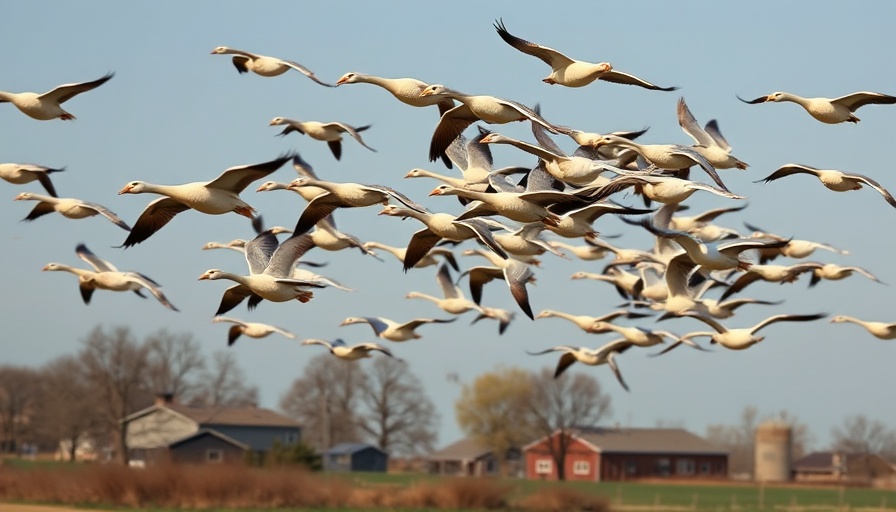
Challenging the Status Quo: The Shift in Goose Management
Farmers in Noord-Holland are on the cusp of a transformative shift as new cooling facilities will allow them to manage the goose population's meat sustainably. With 55,000 geese culled annually as part of a wildlife management strategy, the need for effective solutions has never been more pressing. This initiative not only addresses the wildlife management issues but also offers the potential for economic gain by promoting local and sustainable meat consumption.
Why Local Goose Meat Matters
Local consumption of goose meat serves multiple purposes. Firstly, it provides an alternative protein source for consumers interested in sustainable eating. Secondly, it significantly reduces food waste, as pointed out by Jelle Beemsterboer, a deputy in Noord-Holland who emphasized the importance of utilizing the meat rather than wasting it.
Economic Impact of Goose Management
The economic implications of managing goose populations are significant. By turning a wildlife management challenge into a food production opportunity, farmers can further stabilize their income sources while contributing to local economies. This transformation can generate more jobs in local processing and distribution of goose meat.
Cultural and Culinary Opportunities
Promoting goose meat is not just about conservation and economy; it also invites creative culinary explorations. Initiatives like the provincial summer barbecue, where goose meat dishes were showcased, demonstrate the potential for culinary innovation. By integrating goose meat into the local food scene, producers can create a niche market that appeals to both locals and tourists seeking authentic regional products.
The Political Landscape and Consumer Sentiment
Despite the benefits, political dynamics inhibit the momentum of promoting goose meat. The resistance from opposition parties further complicates efforts to shift public perception towards embracing goose meat consumption. While farmer Laura Ouderkerken advocates for the initiative, widespread acceptance hinges on altering public attitudes towards this often-overlooked protein source.
Future Trends in Wildlife Management
Looking ahead, the expansion of cooling facilities signifies a growing recognition of the complexities involved in wildlife management. The expected increase in locations by 2026 points to a future where enhancing local meat consumption becomes a standard practice. Additionally, as consumer behavior shifts towards more sustainable products, goose meat may experience a renaissance in its culinary status.
In conclusion, as the cooling facilities roll out across Noord-Holland, the agricultural community stands ready to not only tackle the pressing issue of goose overpopulation but also by turning it into an opportunity for sustainable meat production. Engaging with local consumers and establishing new culinary traditions will be critical in making this initiative a success. Are you ready to embrace the sustainable future of goose meat consumption?
 Rij toevoegen
Rij toevoegen






Write A Comment